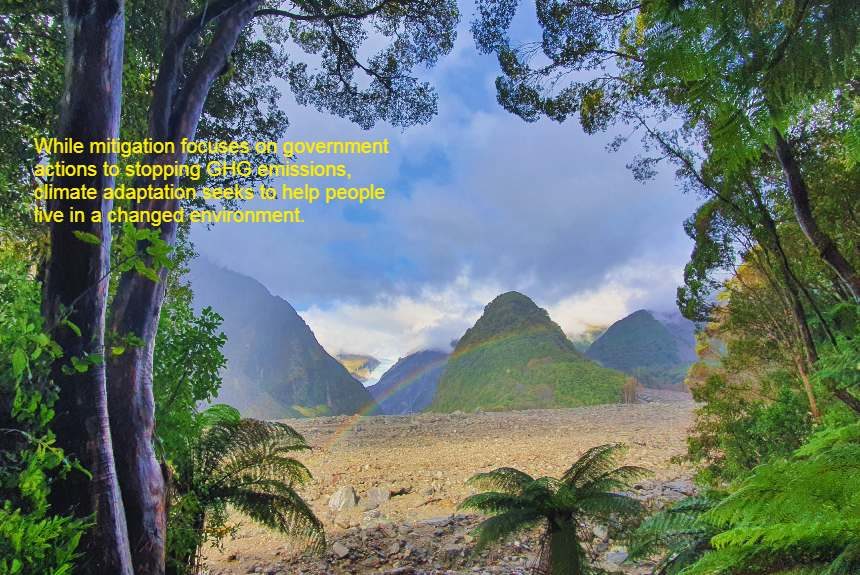“While mitigation focuses on government actions to stopping GHG emissions, climate adaptation seeks to help people live in a changed environment”
Given the extreme events that have happened within the last ten years, according to the World Meteorological Organisation (WMO), the period 2011 to 2020 is the warmest decade in their record, with 2015 marking the start of the six warmest consecutive years.
Also, within just two years, we see headline news of extreme events around the world—severe floods in NSW, Australia, and the West Coast of New Zealand, wildfires in the US and Australia, the deep freeze in Texas, debilitating droughts in some parts of Africa, and increasing strength and frequencies of cyclones and typhoons that affect Southeast Asian countries, southern US states, and countries in the Caribbean and Pacific Island countries.
The European Commission’s Climate Adaptation Plan recognizes that climate change is already happening, citing all these extreme events that have already occurred and calling for urgent adaptation actions.
The Global Citizen article concisely and thoughtfully explains why climate adaptation is vital to our survival. Quoting Christina Chan, director of the Climate Resilience Practice at the World Resources Institute (WRI), “Adapting to climate change is a moral, economic, and environmental imperative.”
Climate Adaptation vs Mitigation
The article also distinguishes between climate adaptation and mitigation, and both should be addressed together to address the climate crises. While mitigation focuses on government actions to stop GHG emissions, climate adaptation seeks to help people live in a changed environment.
According to the article, climate adaptation is any measure that protects the community or ecosystem from the effects of climate change while also building long-term resilience to a changing environment.
Climate adaptation is wide-ranging in scope, ranging from agriculture practices using climate-resilient crops to strengthening infrastructure and physical structures, building protective measures around a vulnerable area (seawalls, levees), installing early warning systems, and improving the management of waterways.
Nature-based solutions are also becoming popular because they can work both as climate adaptation and mitigation. Restoring and expanding mangroves in Southeast Asian countries, for example, absorbs CO2 emissions, protects coasts from flooding, and enhances the ecosystem in the area.
Climate adaptation should be guided by local priorities. It should identify vulnerable areas and find ways to address them using innovative or existing knowledge and technology.
Climate Change funding institutions
Institutions like the United Nations feel strongly that wealthy economies should support developing countries to help them adapt to climate change. Climate change disproportionately affects Poor and developing communities more than richer countries because of their low adaptive capacities.
Developing countries require support to boost their finance, skills, knowledge, and technology to improve their adaptive capacities.
Thankfully, funding institutions like the Green Climate Fund, the Adaptation Fund, the Global Environmental Facility, etc., exist to help developing countries efficiently build resilience and help address the widening inequalities from climate change effects.
These funds can help governments gradually transition to a low-carbon economy, uptake more renewable energy infrastructure, expand nature-based solutions, and apply the principles of Build Back Better to those communities struggling to recover after significant disasters.
Inclusion of Local knowledge in climate adaptation initiatives.
The article also points out that climate adaptation strategies should include local knowledge and locally-led initiatives.
Several studies attest to the benefits and advantages of recognizing and implementing local knowledge in a community. These include a greater sense of ownership, community cohesion, and quicker recovery from disasters because the workforce and resources are readily available in the area.
These studies also point out the role of improved government policies, especially those that integrate climate change response, in ensuring the long-term sustainability and success of climate adaptation initiatives.
Consultation with the community, giving stakeholders a voice in the decision-making process, and good climate change response policies work together to ensure the long-term success of any climate adaptation action that a community chooses.
Source:
McCarthy, J. (2021, February 5). What is Climate Adaptation and Why Is It Key to Our Survival. Global Citizen. Retrieved from https://www.globalcitizen.org/en/content/what-is-climate-adaptation
HEADER PHOTO CREDIT: Gillespies Beach, West Coast, New Zealand by Michal Klajban – Own work, CC BY-SA 4.0, https://commons.wikimedia.org/w/index.php?curid=89467191



Leave a Reply